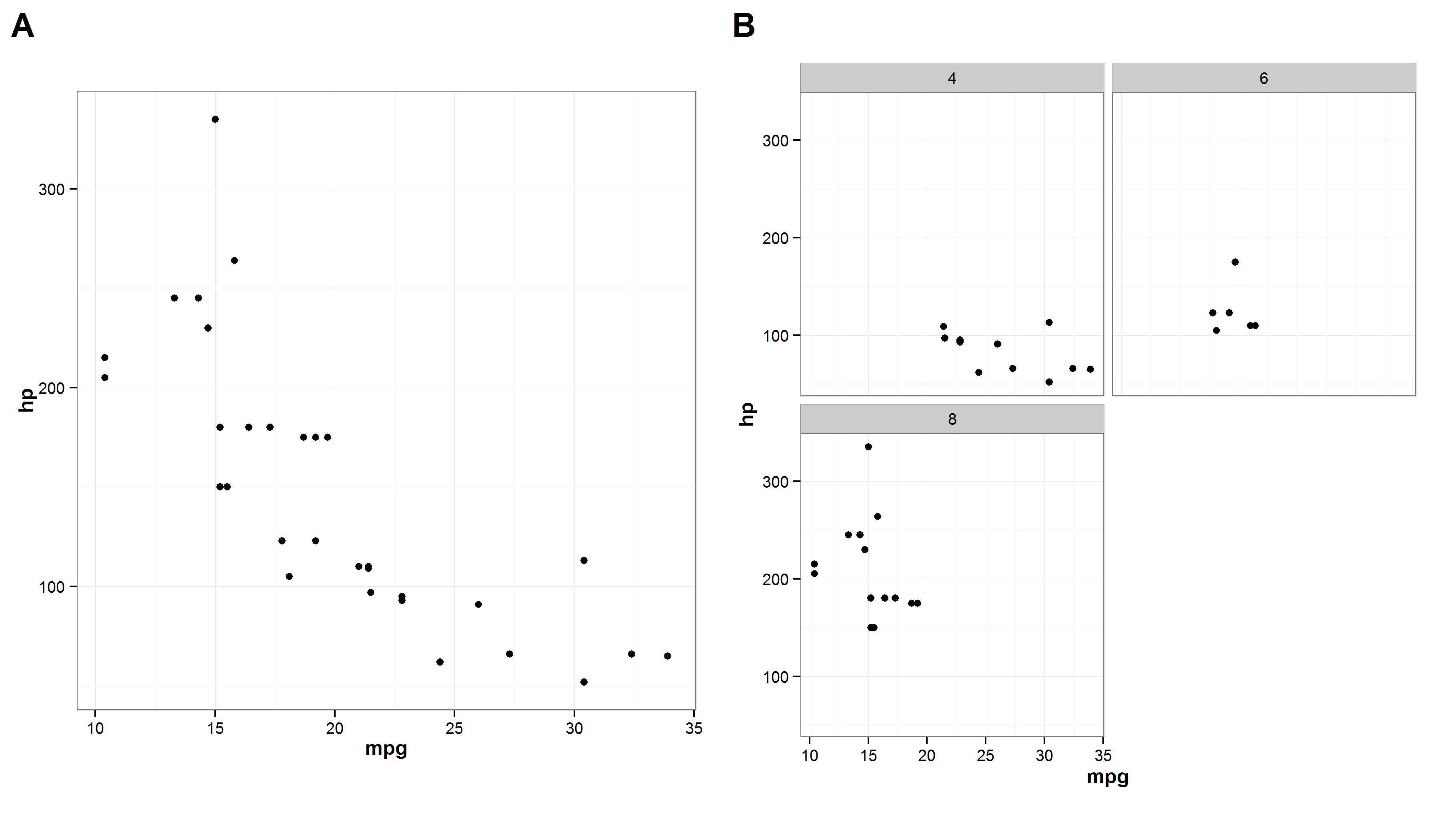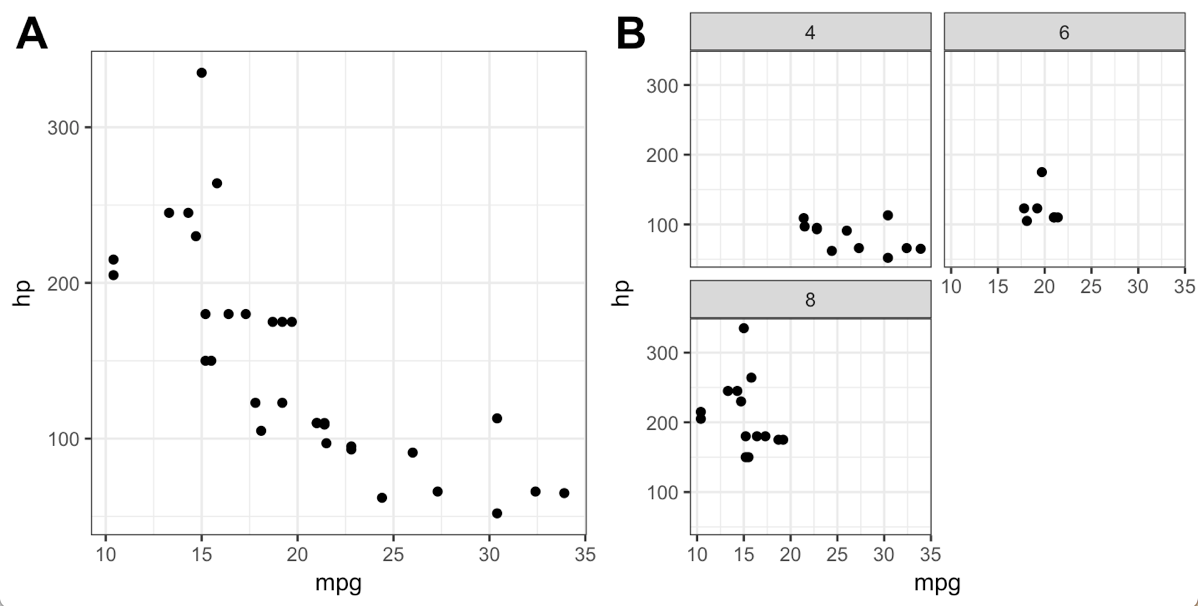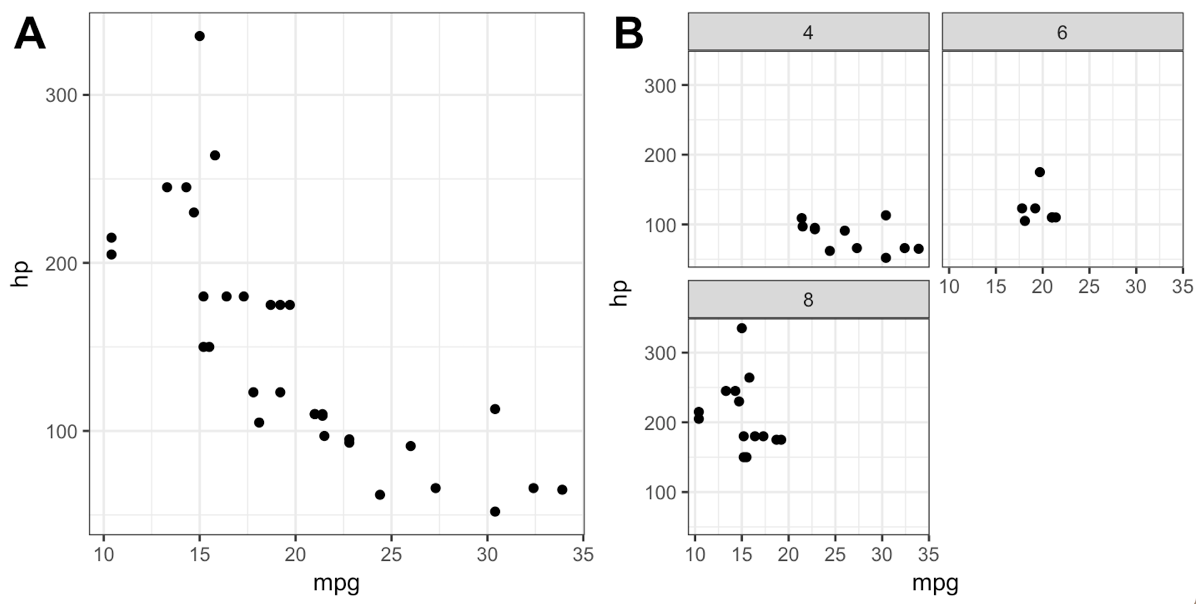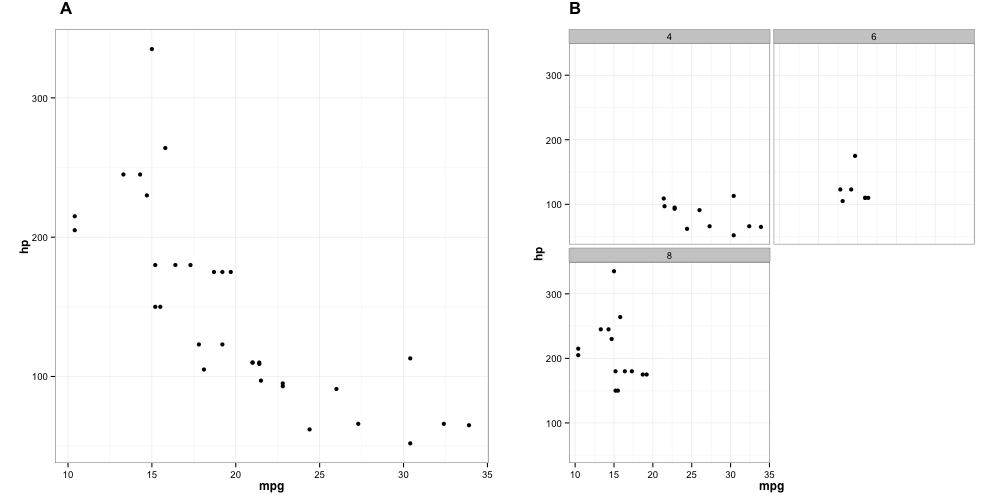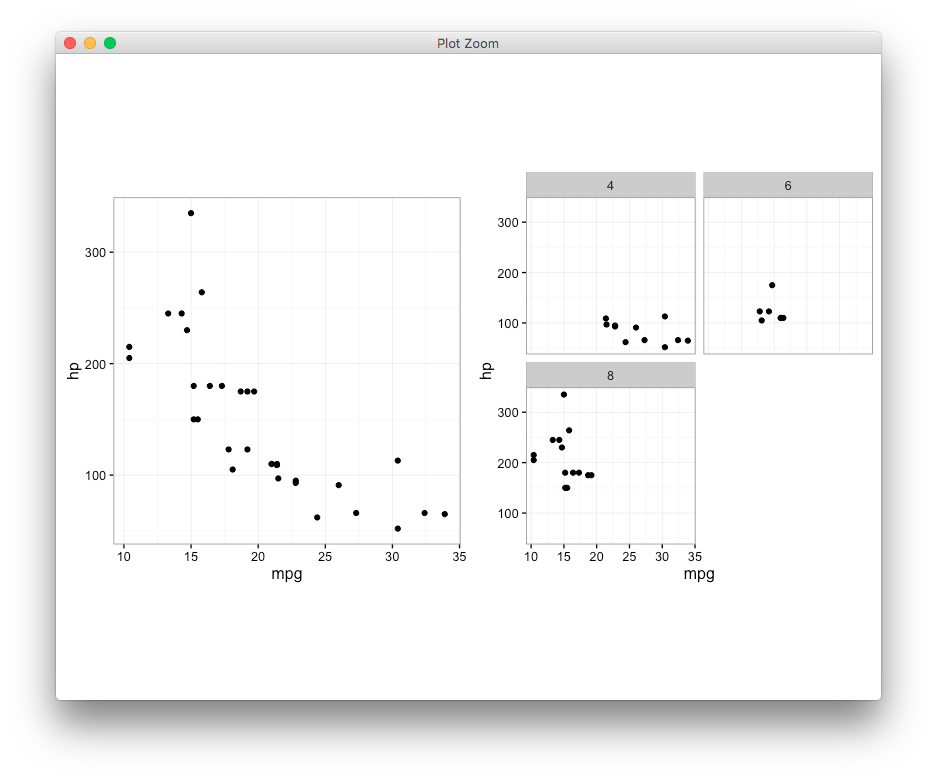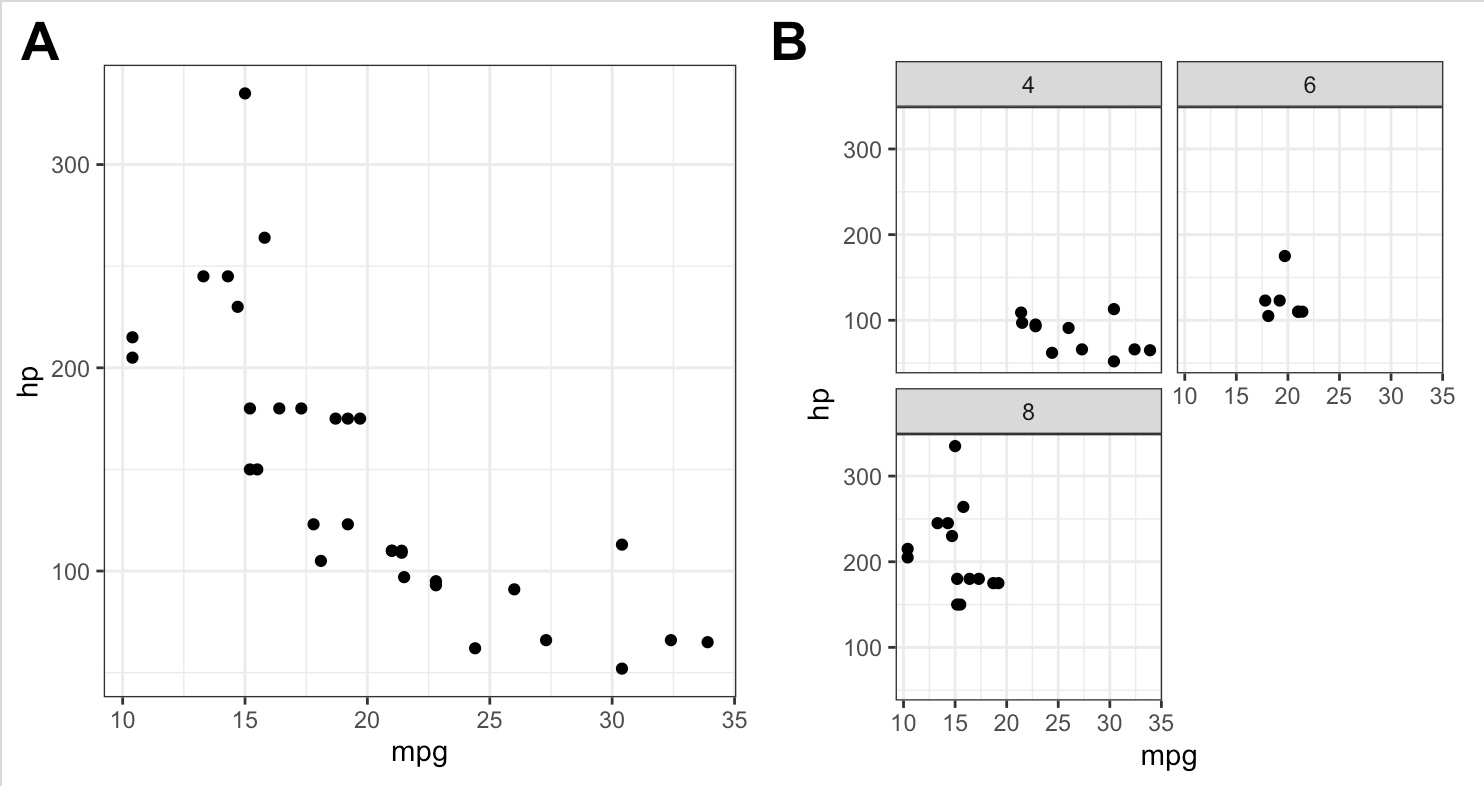here's a solution based on this idea
library(ggplot2)
library(grid)
library(gridExtra)
library(gtable)
gtable_frame <- function(g, width=unit(1,"null"), height=unit(1,"null")){
panels <- g[["layout"]][grepl("panel", g[["layout"]][["name"]]), ]
ll <- unique(panels$l)
tt <- unique(panels$t)
fixed_ar <- g$respect
if(fixed_ar) { # there lies madness, want to align despite aspect ratio constraints
ar <- as.numeric(g$heights[tt[1]]) / as.numeric(g$widths[ll[1]])
height <- width * ar
g$respect <- FALSE
}
core <- g[seq(min(tt), max(tt)), seq(min(ll), max(ll))]
top <- g[seq(1, min(tt)-1), ]
bottom <- g[seq(max(tt)+1, nrow(g)), ]
left <- g[, seq(1, min(ll)-1)]
right <- g[, seq(max(ll)+1, ncol(g))]
fg <- nullGrob()
lg <- if(length(left)) g[seq(min(tt), max(tt)), seq(1, min(ll)-1)] else fg
rg <- if(length(right)) g[seq(min(tt), max(tt)), seq(max(ll)+1,ncol(g))] else fg
grobs = list(fg, g[seq(1, min(tt)-1), seq(min(ll), max(ll))], fg,
lg, g[seq(min(tt), max(tt)), seq(min(ll), max(ll))], rg,
fg, g[seq(max(tt)+1, nrow(g)), seq(min(ll), max(ll))], fg)
widths <- unit.c(sum(left$widths), width, sum(right$widths))
heights <- unit.c(sum(top$heights), height, sum(bottom$heights))
all <- gtable_matrix("all", grobs = matrix(grobs, ncol=3, nrow=3, byrow = TRUE),
widths = widths, heights = heights)
all[["layout"]][5,"name"] <- "panel" # make sure knows where the panel is for nested calls
if(fixed_ar) all$respect <- TRUE
all
}
p1 <- ggplot(mtcars)+
geom_point(aes(x=mpg,y=hp))+
theme_bw()+
theme(aspect.ratio=1)
p2 <- ggplot(mtcars)+
geom_point(aes(x=mpg,y=hp,fill=cyl))+
facet_wrap(~cyl,ncol=2)+
theme_bw()+
theme(aspect.ratio=1,
legend.position='none')
g1 <- ggplotGrob(p1)
g2 <- ggplotGrob(p2)
fg1 <- gtable_frame(g1)
fg2 <- gtable_frame(g2)
grid.newpage()
grid.draw(cbind(fg1, fg2))
![enter image description here]()
Note that the gtable_frame function wraps plots based on their panels, but excluding the panel strips by design (I find it more pleasant).

